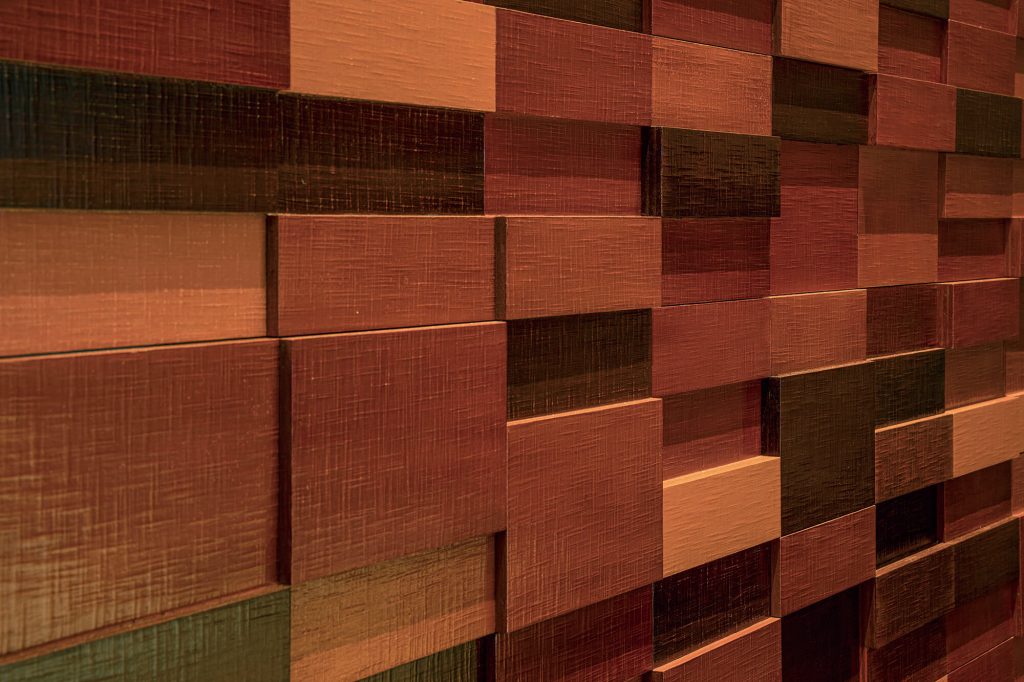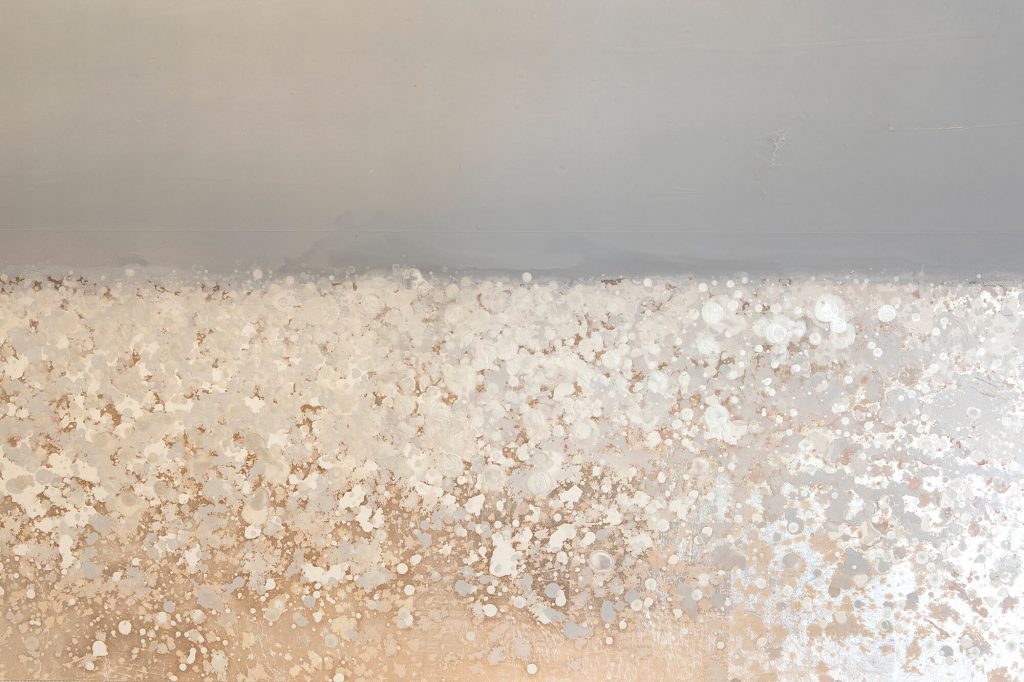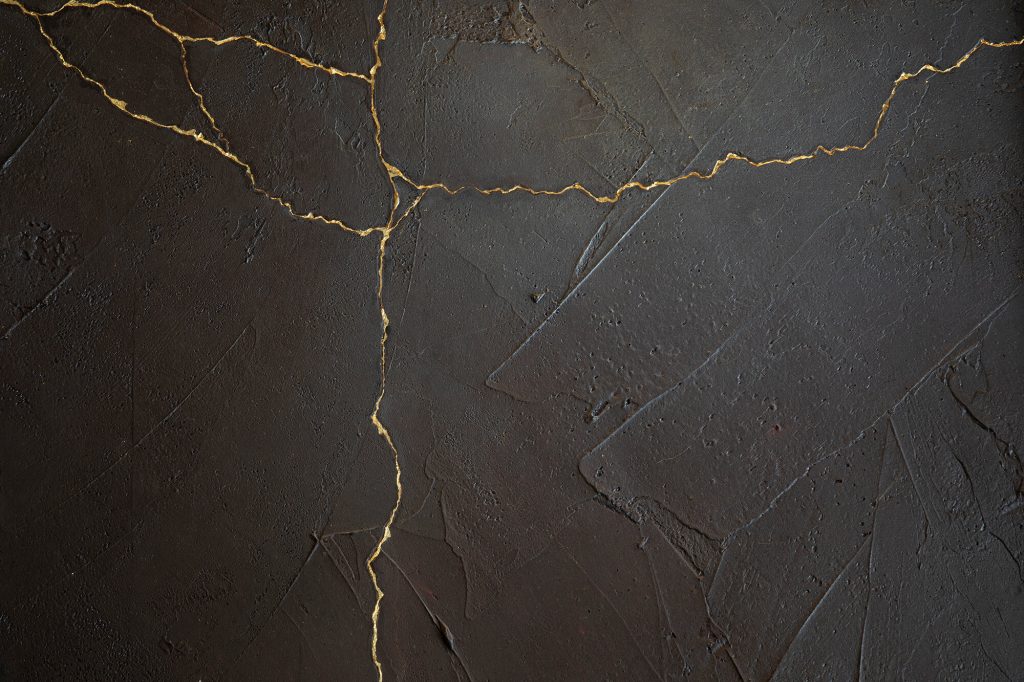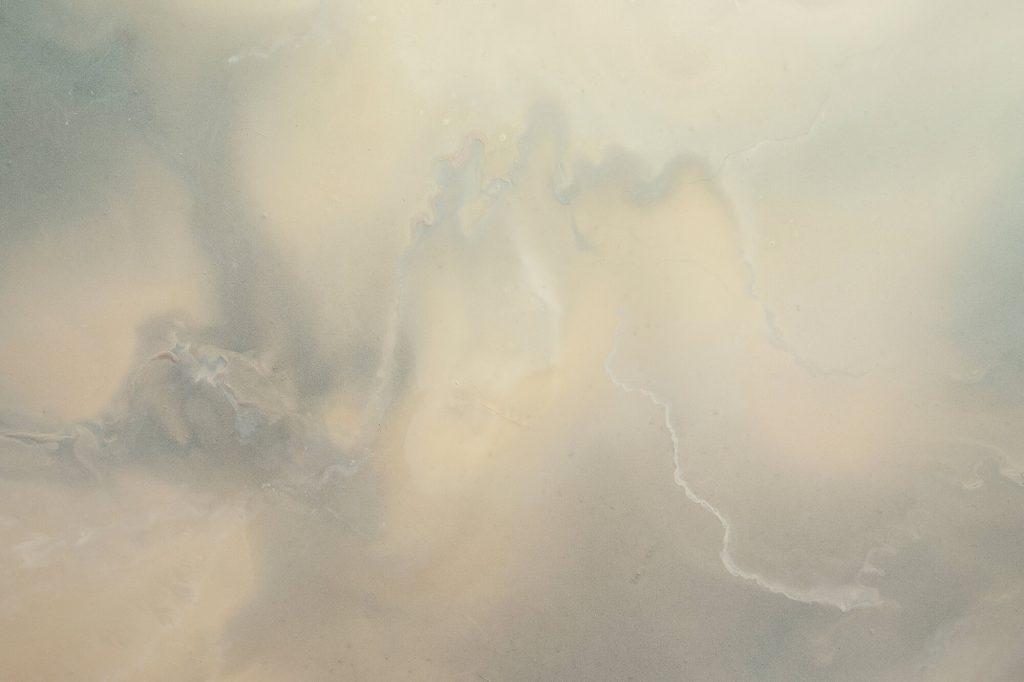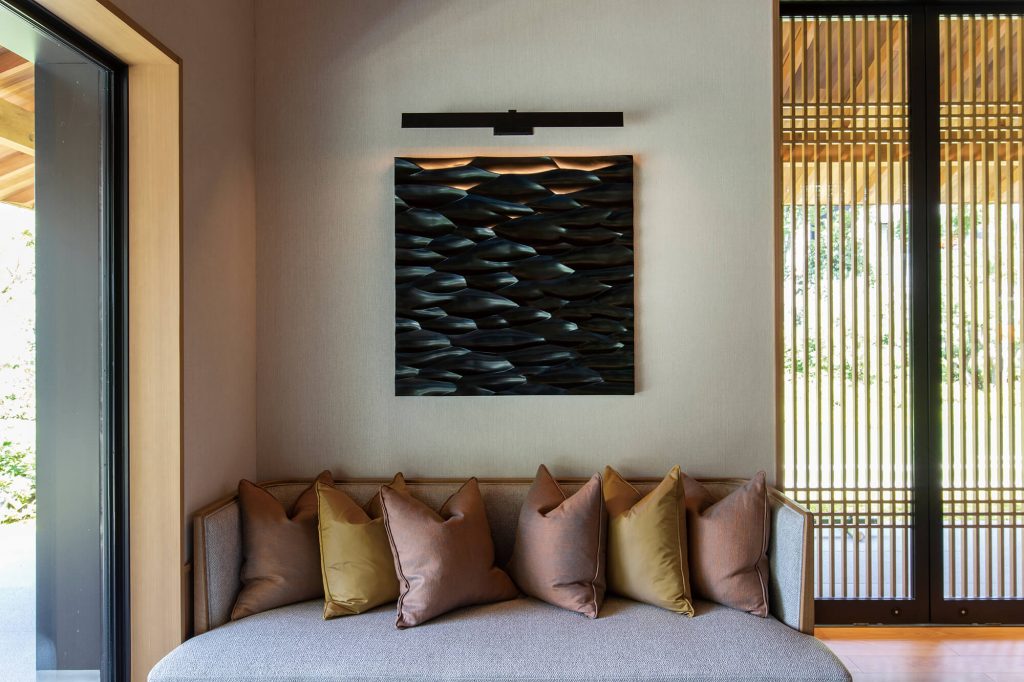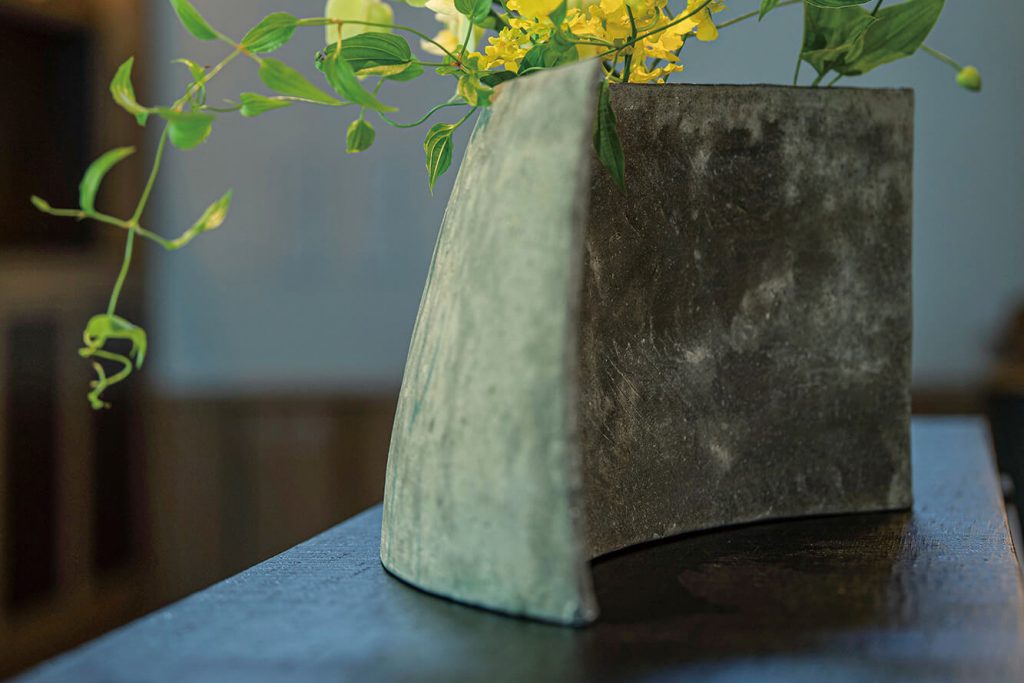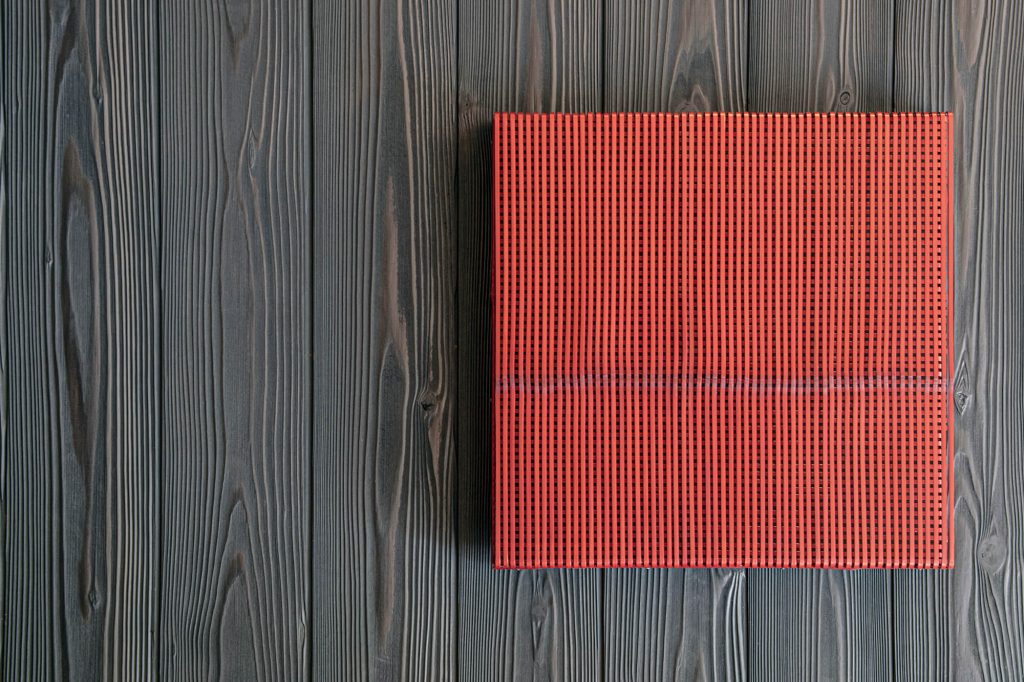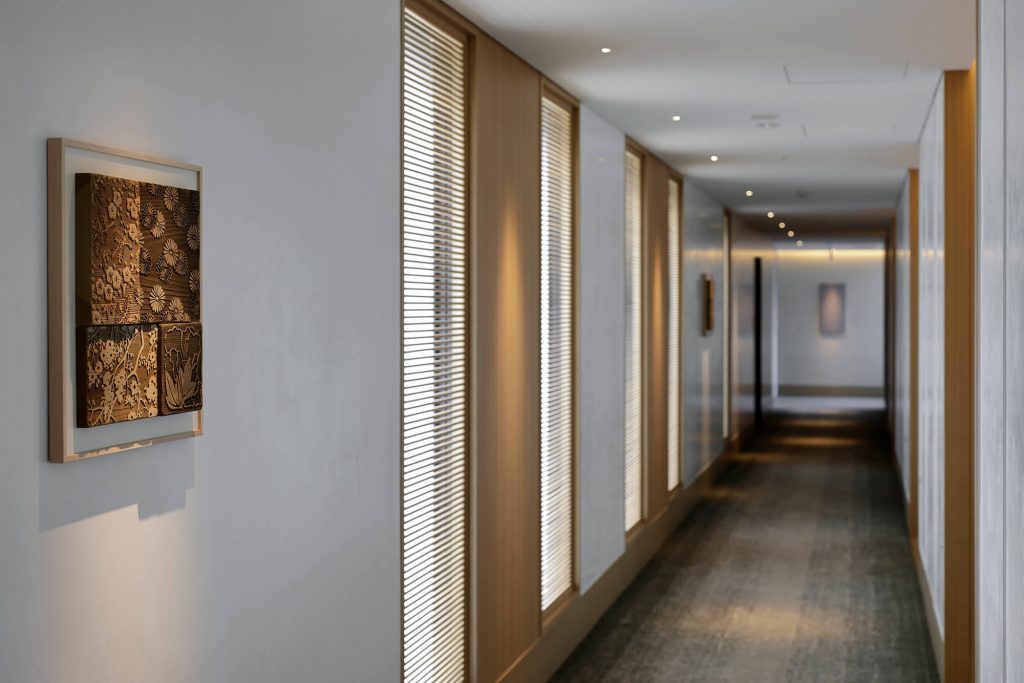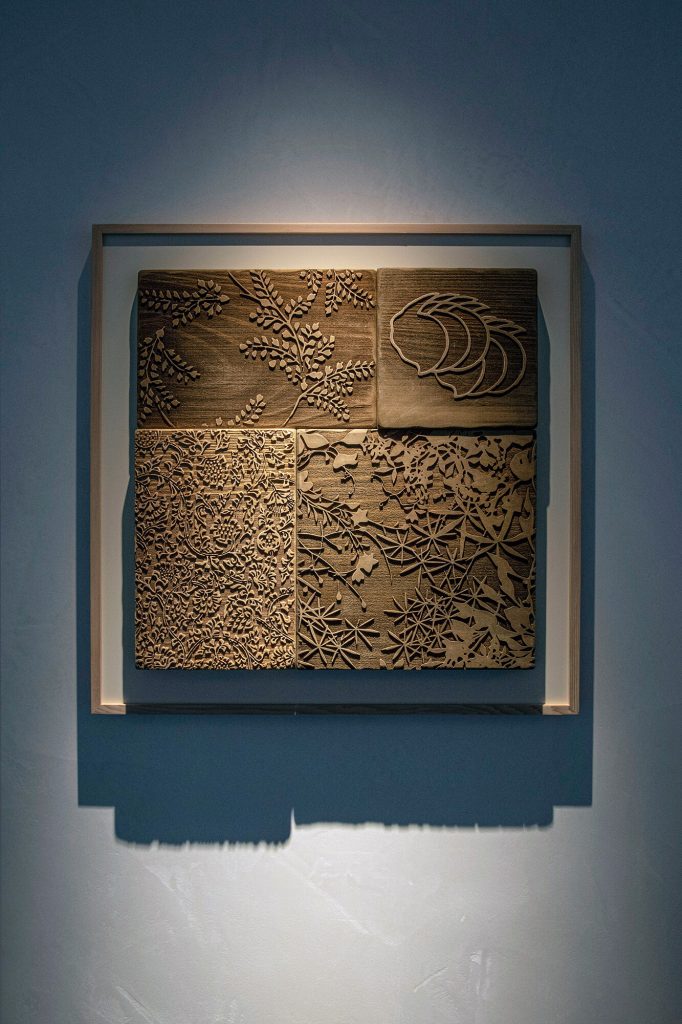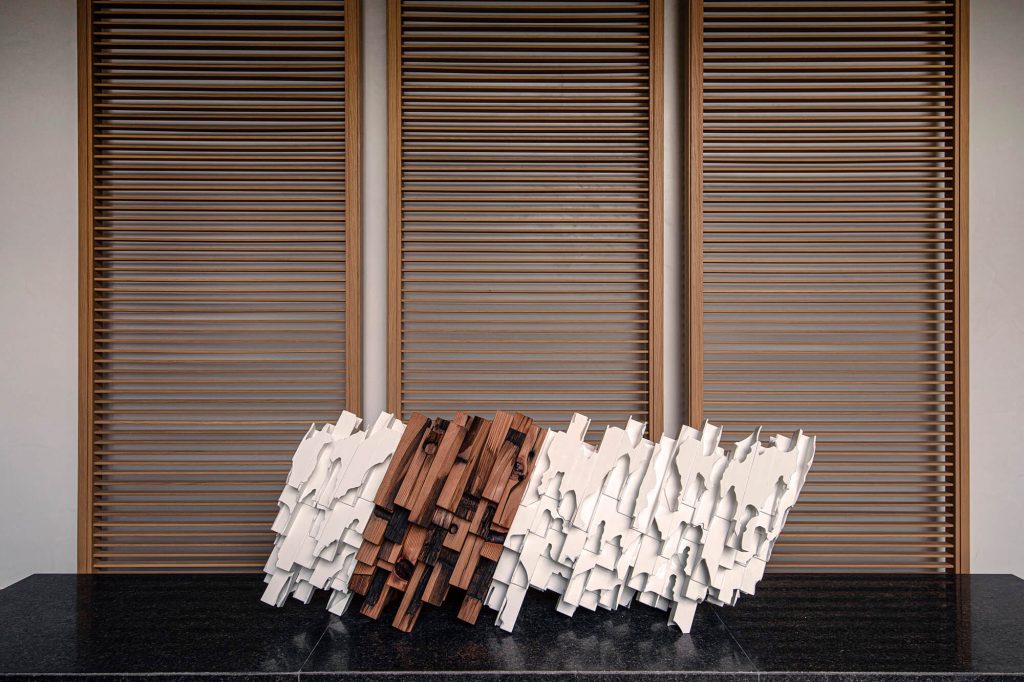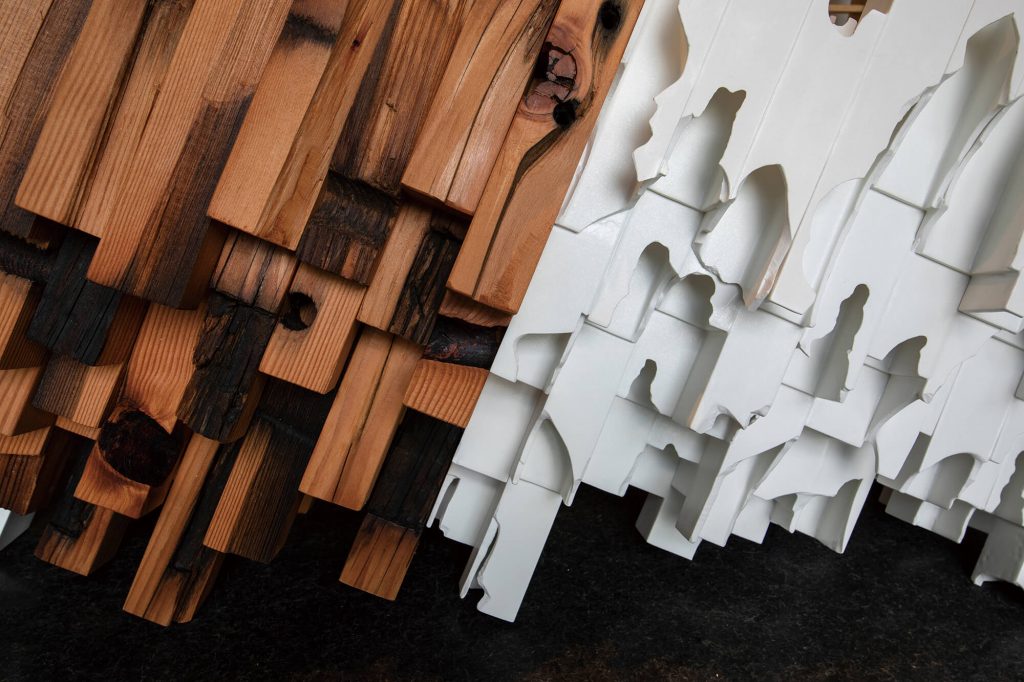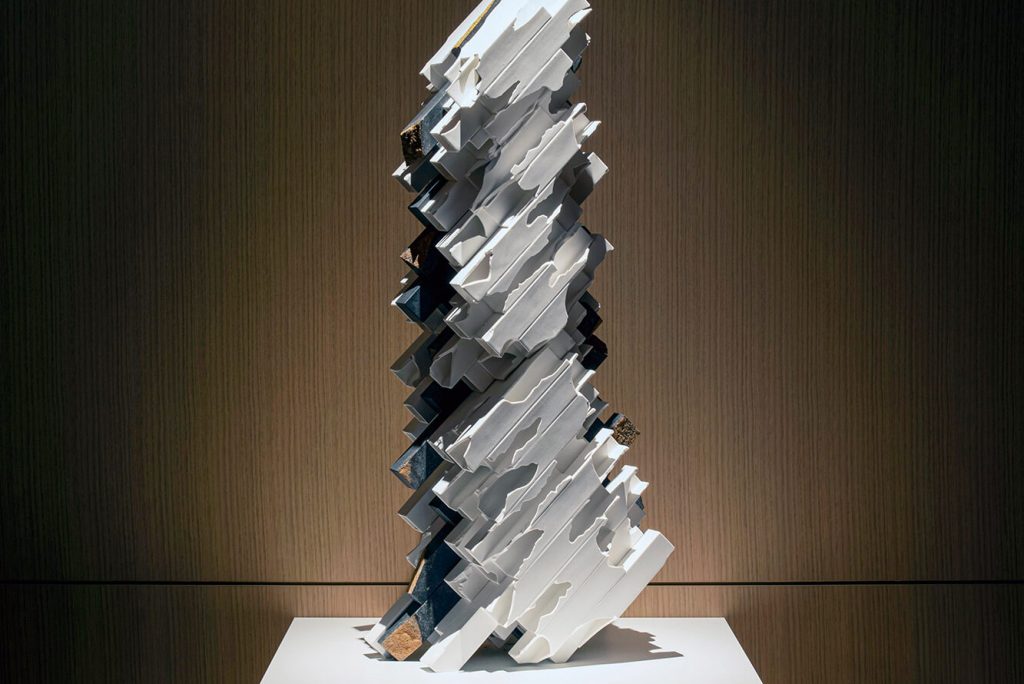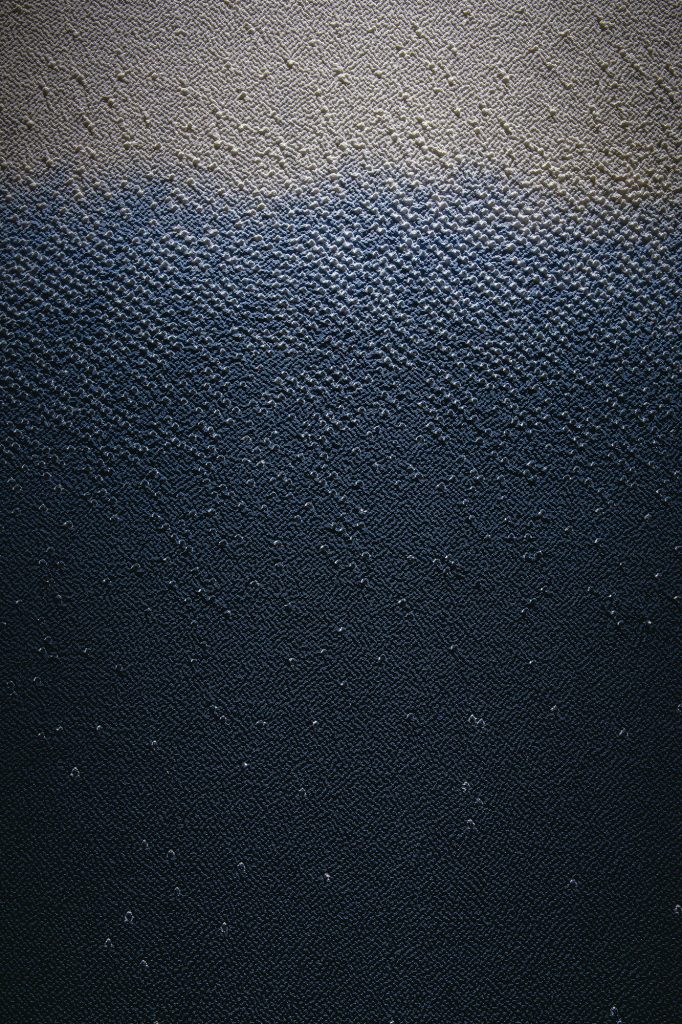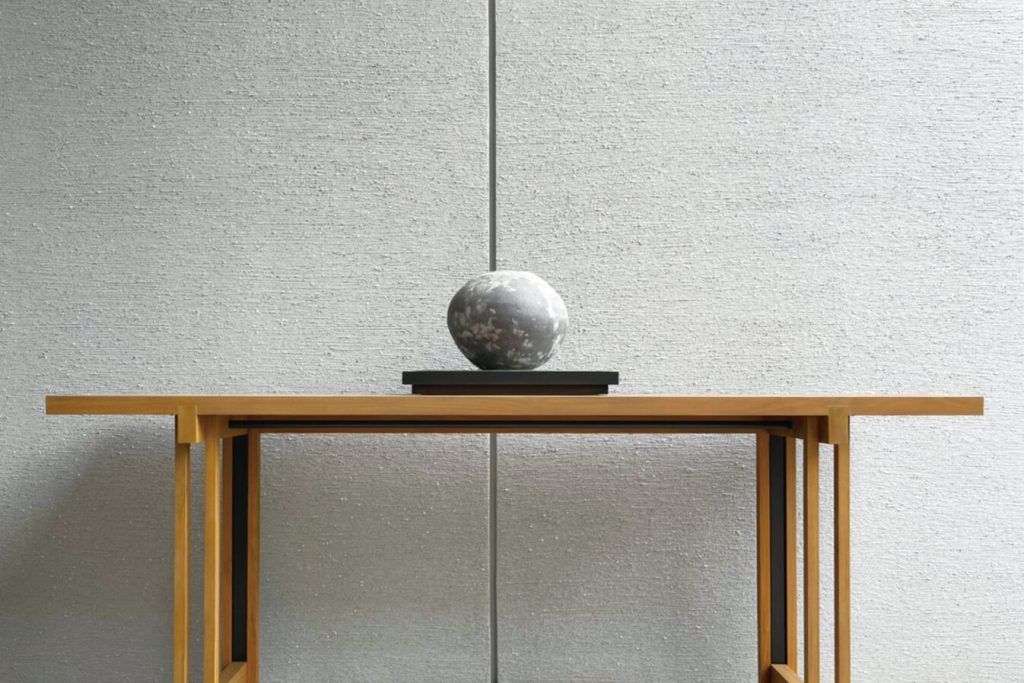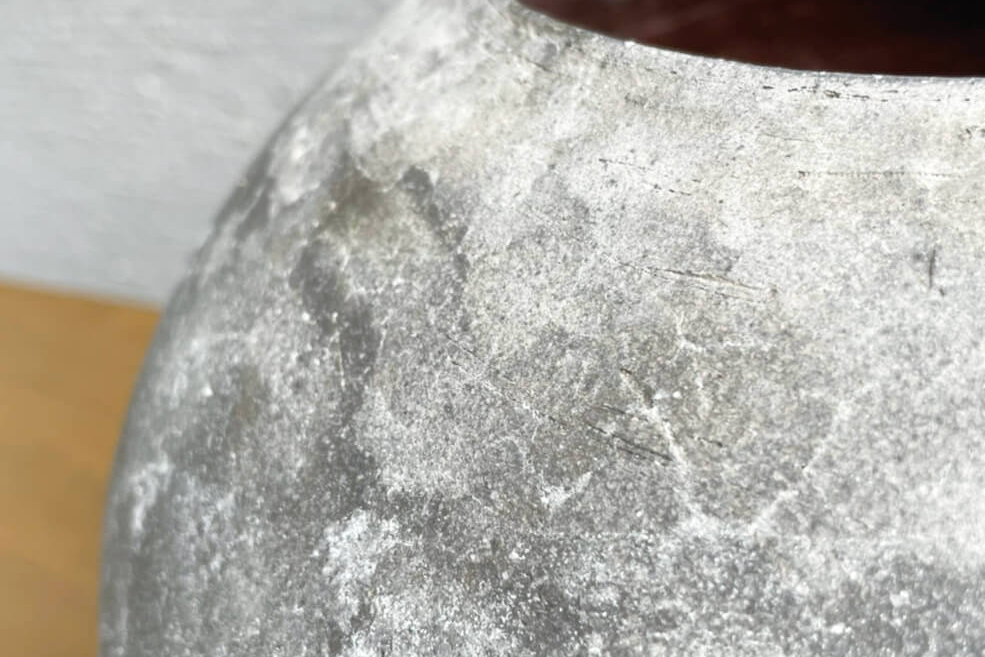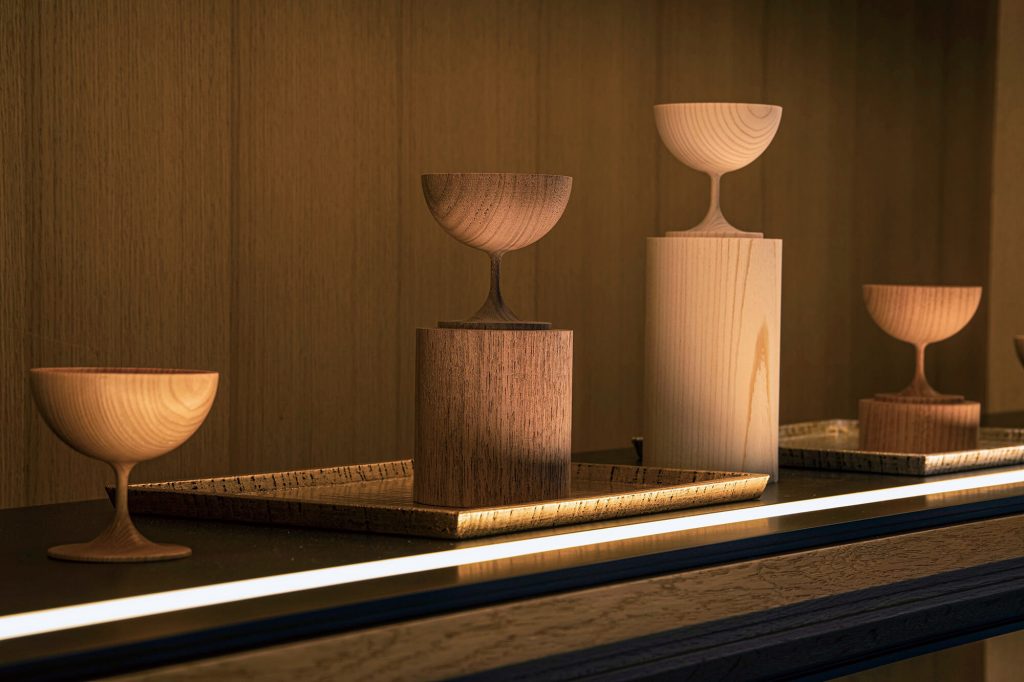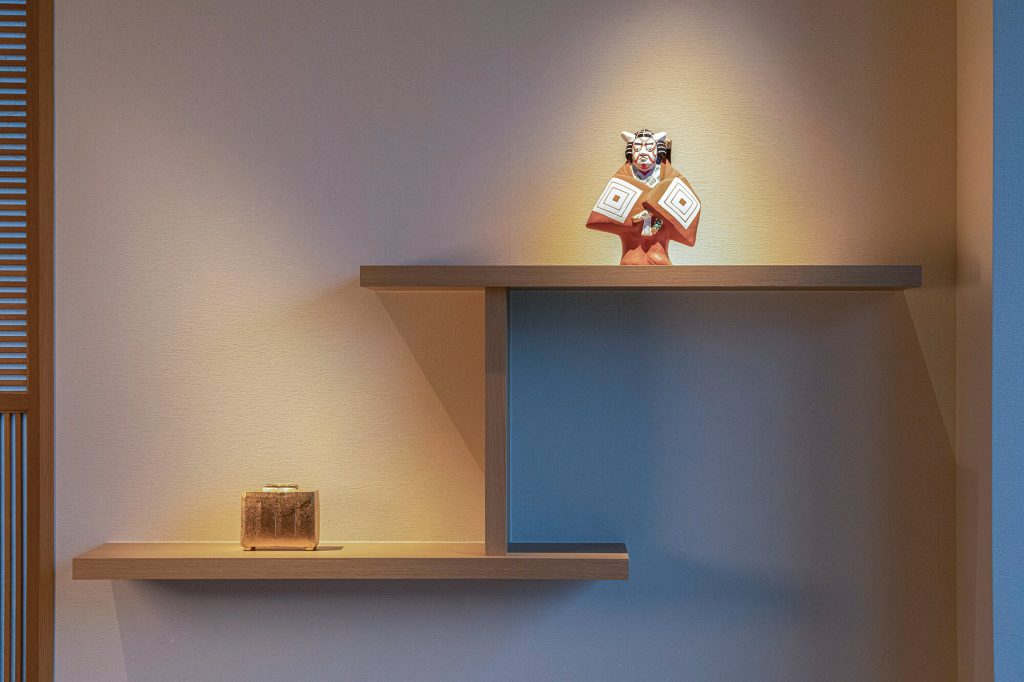ROKU KYOTO, LXR Hotels & Resorts opened in Takagamine, Kyoto.
We were in charge of artwork consulting.
CONCEPT
Nature viewed through contemporary arts and traditional crafts
Created in the birthplace of the Rinpa school
ROKU KYOTO, LXR Hotels & Resorts
Traditional crafts made in Kyoto are exhibited in the reception area,
restaurant, spa and in all guest room corridors.
These include works made from lacquer, bamboo, weaving, dyeing and pottery.
In contemplating these works you can sense light, wind, silence, and the very breath of life.
Please enjoy this message from ROKU KYOTO with all five senses.
RECEPTION
The beauty of lacquer reflects nature’s abundance
Clouds, lightning, the brilliance of the horizon, tiny fluctuations on the water’s surface – the lacquer works on display express the natural beauty of the heavens and earth. Behind the front area is a wall/art-work made from lacquered wooden blocks of various colors and textures, stacked in a stratum-like formation. In the center of the lobby, the art is inspired by one of the most famous examples of Rinpa painting, the Wind God and Thunder God (Fujin and Raijin). These designs were made by imagining how such Rinpa masters as Tawaraya Sotatsu, Ogata Korin, and Sakai Hoitsu (who drew Fujin and Raijin by anthropomorphizing natural phenomena) might draw if they lived today. Lastly, Anzai Kenta has created ceramic artworks with a special luster created by clay mixed with lacquer, adding color while radiating a profound brilliance. Enjoy your time here in tranquility, forgetting the stresses of the world.
Japanese lacquer/ 表望堂 HYOBODO
Ceramic art/ 安斎賢太 ANZAI KENTA
TEA HOUSE
Savor the fluctuation of water and light
In the sofa space facing the basin of the TEA HOUSE these art panels represent the surface of water rippling in the wind. The reflecting light flickers amid the greenery of the trees in the garden, gently connecting the outdoors with indoors. Relax here with a cup of tea while appreciating the ever-changing scenery. Another highlight of the room is the expressive ceramic vases with their display of seasonal flowers.
Japanese lacquer/ 表望堂 HYOBODO
Ceramic art/ 大森健司 OMORI KENJI
TENJIN
The beauty of bamboo craftsmanship merges with the space
When you step in, the first thing you notice is the large bamboo artwork displayed in the center of the restaurant. This traditional technique employs madake bamboo native to Kyoto. The bamboo is then heated and bent to express the strength and suppleness of the material. Behind the seats are objects lined up to resemble net baskets. Each bamboo piece is carefully selected and aligned, then delicately assembled – a fine example of an artwork which respects the natural beauty of its material.
Bamboo craft/ 竹又 中川竹材店 TAKEMATA NAKAGAWA TAKEZAITEN
GUESTROOM CORRIDOR
Messages created from traditional Kyo Karakami woodblock design
The corridors of the guestroom buildings are decorated with artworks using traditional patterns of Kyo Karakami. Each building has a different theme derived from traditional motifs of the Edo period. These include nature (“clouds”, “waves”, “grass” and “flowers”) or “invisible things” such as wind and energy. Each panel is made up of woodblocks carved out of four patterns, each pattern representing its own meaning, story, expression and messages. The ROKU KYOTO original karakami art panels are another highlight. Made from the ROKU KYOTO original pattern, the base of these works is octagonal – a traditionally auspicious geometric design that works well with contemporary sensibilities and spaces.
Kyo-karakami/ 株式会社丸二 MARUNI Co.,Ltd.
CORRIDOR
Ceramics and wood incarnate the beauty of eternal regeneration
This ceramic artwork facing the lush garden was commissioned for ROKU KYOTO by Takeuchi Kouzo as part of his “modern remains” series. The materials are sourced from recycled scrap wood generated by the hotel, then fused by the artist with his characteristic modeling to create a continuous cross section.
Ceramic art/ 竹内紘三 TAKEUCHI KOUZO
THE ROKU SPA FIRST FLOOR
Confronting time – the beauty of stone and pottery
Date-Kanmuri-ishi, a stone quarried in Okurayama, Miyagi Prefecture, was a material much beloved by sculptor Isamu Noguchi. The rugged natural surface seems to have been gashed by a lightning strike. The fine gradation of pigments ranges from rusty-colored to an almost-black shade of ore. Each stone’s rich modeling was created by nature over centuries. In addition, the stone garden displays works by ceramic artist Takeuchi Kouzo made from Kanmuri stones combined with recycled scrap wood materials generated by the hotel. The message such as diversity, coexistence, and regeneration are expressed.
Ceramic art/ 竹内紘三 TAKEUCHI KOUZO
THE ROKU SPA BASEMENT FLOOR
Deep repose springs from the beauty of silence
A variety of works are quietly scattered around, including a stone garden made from Kanmuri stones. The elevator hall displays an art panel depicting deep sea bubbles merging with the light on the surface of the water. This panel was made using the traditional Kyo Kanoko Shibori squeezing technique. In the corridor leading to the treatment room, notice the Raden art panel – the contemporary geometric pattern made of rainbow-colored shells is placed on a rosy-colored panel. Each treatment room also displays ceramic works which invite an aura of rest and tranquility.
Stone/ 大蔵山スタジオ株式会社 OKURAYAMA STUDIO LTD.
Nishijin weaving/ 渡文株式会社 WATABUN Co.,Ltd.
Kyo-kanokoshibori/ 株式会社京都絞美京 KYOTO SHIBORI BIKYO Co.,Ltd.
Raden/ 嵯峩螺鈿野村 SAGARADEN NOMURA
SPA CORRIDOR
Woven Zen beauty
Nishijin-ori weaving, a highly-prized traditional Kyoto textile. These woven art panels represent a kare-sansui (or Japanese rock garden) over different times of day from sunrise to sunset. The intricate weaving expresses time as it slowly and gently flows during meditation at a Zen temple.
Nishijin weaving/ 渡文株式会社 WATABUN Co.,Ltd.
SUITE
The new look of Nishijin-ori weaving
Nishijin-ori weaving, one of Kyoto’s great traditional crafts, adorns the interior of the SUITE. The art panel inspired by the motif of fine ripples on the water’s surface as illuminated by the new moon is on the wall. The art work portrays the same basin seen from the suite’s window. The bed head panel depicts shadows floating on the water created by white and gold threads of different thickness.
Nishijin weaving/ 渡文株式会社 WATABUN Co.,Ltd.
GARDEN DELUXE
Tin and porcelain – texture as beauty
The tin work on the wall of the bathroom depicts the moon as it floats in the heavens – a beautiful work to be enjoyed from the comfort of your warm bath. On the interior wall, the ceramic piece represents the earth in relation to the night sky. The various colors and textures of the clay used to create the ceramic can be enjoyed in the room.
Metal crafts/ 清課堂 SEIKADO
Ceramic art/ 竹内紘三 TAKEUCHI KOUZO
POOLSIDE DELUXE
Pottery that holds the memory of the earth
POOLSIDE DELUXE guest rooms with direct access to the thermal pool are decorated with works of Omori Kenji, whose pottery is made by mixing and firing many different types of clay. The various textures resonate and coexist in each work, giving the pottery a mossy, natural rock-like look.
Ceramic art/ 大森健司 OMORI KENJI
ACCESSORY
The Evolution of Traditional Crafts
The shelves of public areas and guestrooms display a range of traditional pieces: bamboo works intricately tied with the Kyoto’s traditional tea ceremony, Fushimi dolls made from Edo-period molds, wood and metal sake sets by master-craftsmen specializing in Buddhist ceremonial objects, and jewelry boxes made by a hyogu mounting-master who restores national treasure-class works of art. The pottery on display is mixture of new and old: contemporary Kyoto-ware made with various colors, textures and materials in addition to Kiyomizu-ware that had been dormant in Kyoto’s Gojozaka climbing kiln for more than 50 years. In these exquisite works both the history and present age of Kyoto coexist in perfect harmony. In this selection of artworks, we can contemplate a range of styles which transcends the limits of conventional traditional craftsmanship.
Kiyomizu-yaki/ 有限会社洸春陶苑 KOSHUN TOUEN Co.,Ltd.
Kiyomizu-yaki/ 藤平陶芸有限会社 FUJIHIRA POTTERY Co.,Ltd.
Lacquerware/ ユーエンアート株式会社 U-en Art Inc.
Kyo-hyogu/ 弘誠堂 KOSEIDO Co.,Ltd.
Fushimi-ningyo/ 有限会社丹嘉 TANKA




